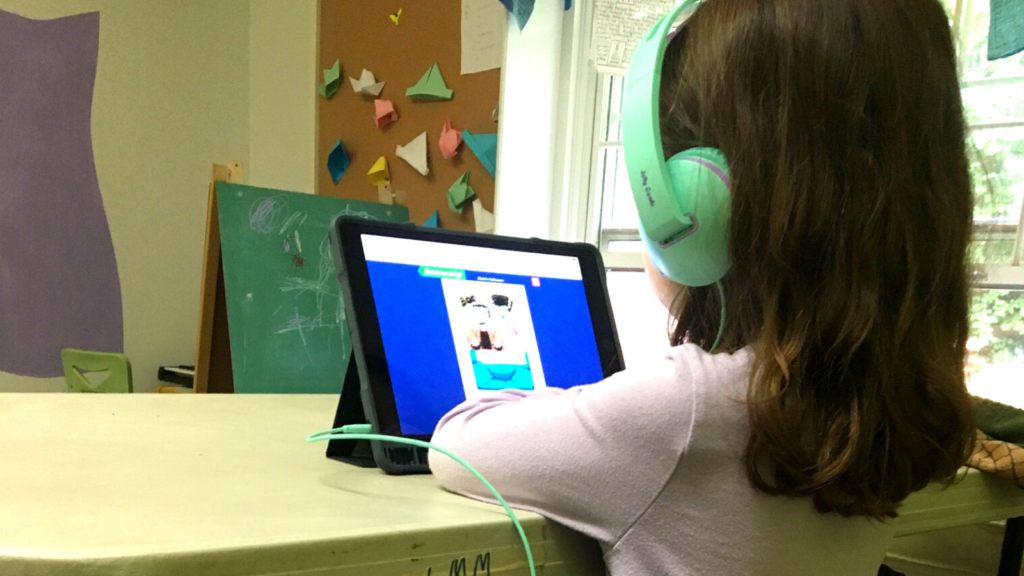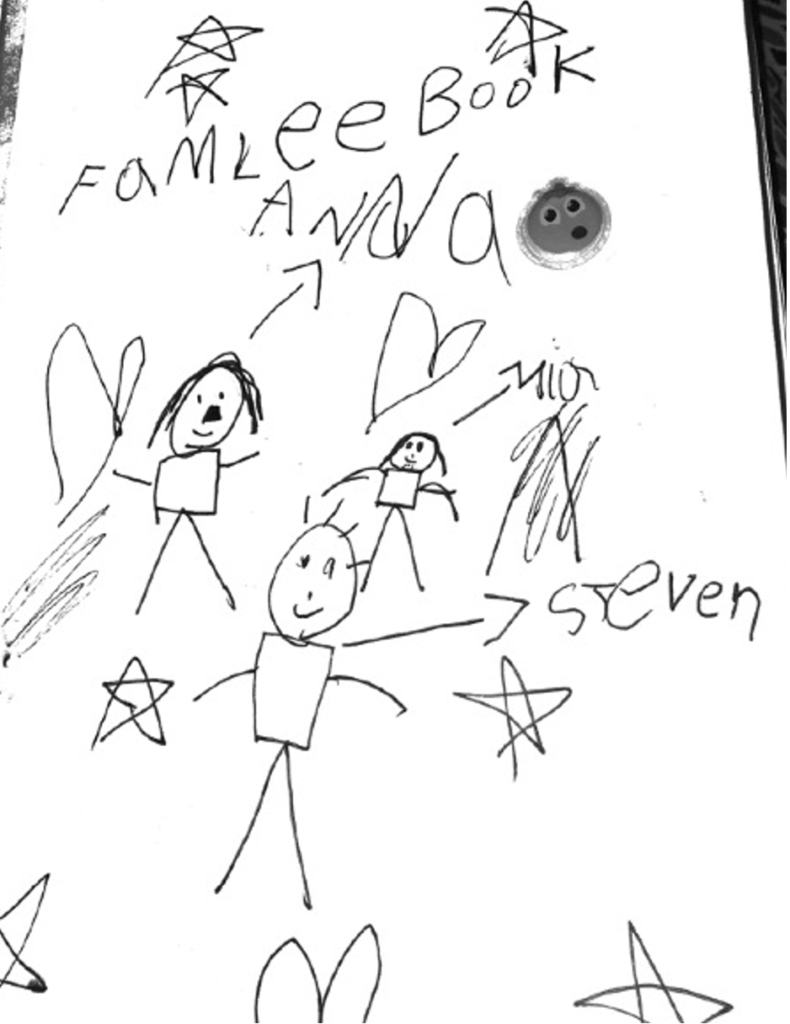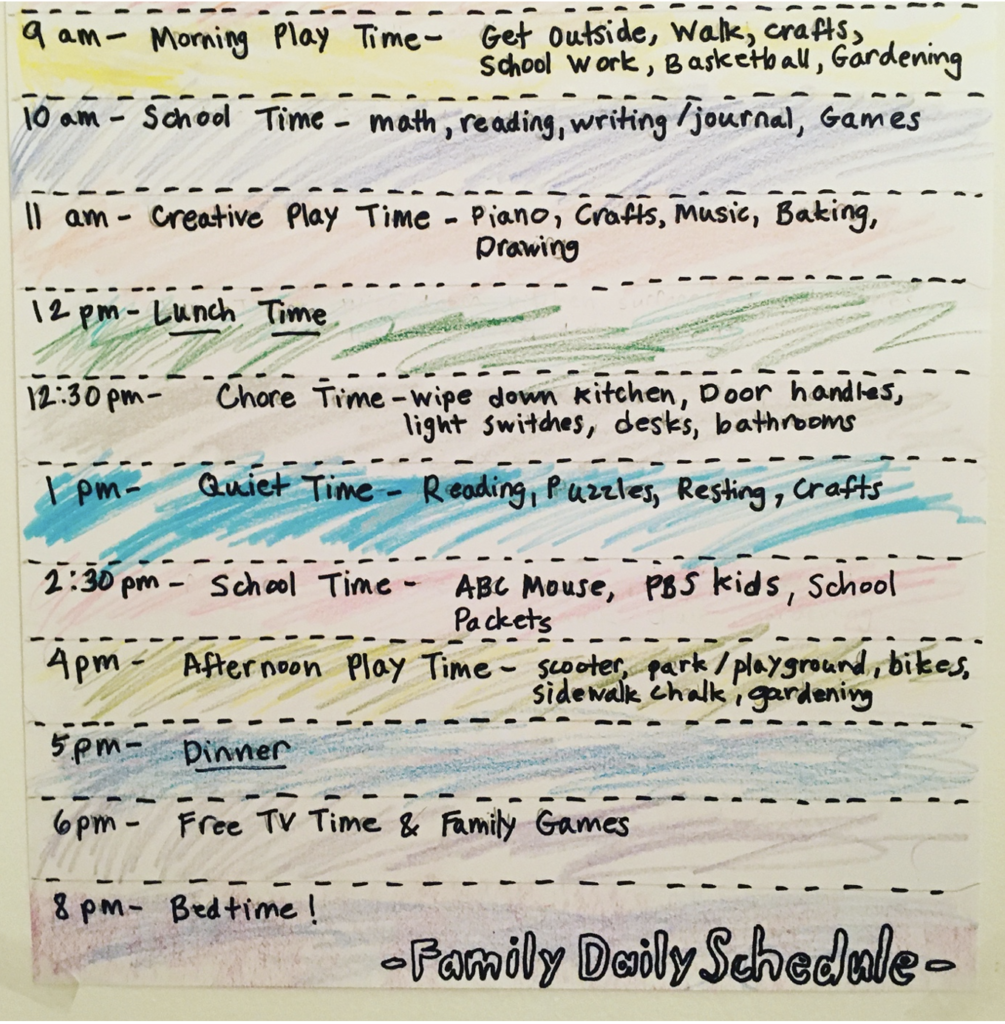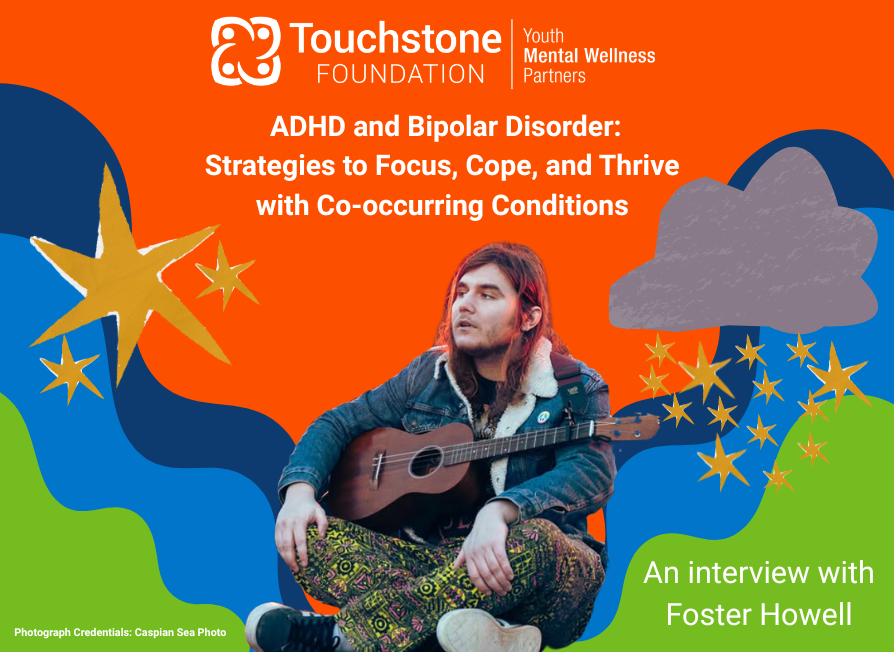
By Anna Kennedy, Executive Director of LOHF
A year ago, my daughter was in kindergarten, and we were enjoying a busy routine of swim classes at the YMCA two evenings each weeknight and dance classes for ballet, tap, and hip-hop on Saturday mornings. She was involved in after-school clubs like roller skating and soccer. Mostly, we were social. Life was busy, and it was fun. We had hectic routines and lived by the work hard, play hard mentality.
We tried to have dinner together most evenings, where we regularly played a game we called “sad, happy, silly,” where we each took turns sharing one thing that happened during our day that was sad, one thing that was happy, and a silly thing. It was fun to hear what we each put in those categories, and what’s silly to me sometimes didn’t seem silly to my daughter. It was a fun routine that helped us share something about our days while we ate dinner together.

Life Changed for Everyone in March 2020
Then the COVID-19 pandemic began in early March 2020. My daughter’s school and my husband’s university had spring break scheduled the following week, and her school sent home a bag full of “just in case” materials. After spring break, school resumed fully online with a one-hour “circle time” each day and assignments posted in Google Classroom. The assignments we could do pretty easily, just print, read a story, make a craft, do a worksheet.
The online group circle time was much harder for my daughter. It was hectic and chaotic as children would often unmute themselves and talk over each other. At first, she complained just a little, saying that online school was “overwhelming” or “confusing,” but by the end of the first week, she broke down in tears, saying it was too sad. She said that seeing her friends and teachers on the computer but not in real life just made her miss them more. I had to agree with her. It was sad. I missed my friends too. I explained that, for a little while, seeing our friends online was the only way we’d be able to see them. We agreed that it was sad. And then, we talked about how our routines were going to change.
While I know professionally that the treatment for anxiety disorder is to gradually and safely face the thing that causes anxiety, this felt different. This was more grief than anxiety. We had been to see a child psychologist several years ago, and we learned some helpful coping strategies to manage transition times. I also learned that how I respond can trigger her or comfort her. In this situation, I noticed that she’s happy to chat with her grandparents, her piano teacher, and a few friends online. This was a major disruption in our routine, and I knew that we needed to provide her with comfort, understanding, and grace.

“Famlee Book” Anna, Mia, Steven (Mia, age 6)
We Developed Strategies to Support our Family’s Mental Health
I knew that we needed a good structure and routine to help my daughter finish her kindergarten year and to help all of us cope with the stressful changes. So, we looked at some examples online, and together we created a daily schedule with time spent on household chores, schoolwork, outside time, reading, and free time to play and watch TV. We hung our daily schedule on the wall in our dining room, and although we didn’t always follow it, it helped as a guide. We became gradually more excited about our new routine and our new way of life. Instead of seeing friends at school, we arranged to meet a friend at a playground or a hike in the woods. We wore our masks and kept our distance. We did outdoor, backyard playdates.

Schools are Better Than Ever at Helping Families Work Through Mental Health Challenges
I knew I didn’t have to handle this alone. So, I emailed her teacher and explained the emotions my daughter was feeling, asking for any alternatives. Her teacher was very understanding and offered to send some extra activities that we could do at home. Knowing that she wouldn’t be required to attend the online circle time really helped lower my daughter’s anxiety, and she told me it was a huge relief. Instead, she connects with her friends individually on Messenger Kids, which I monitor and use as a tool to discuss internet safety.
As the school year ended, I knew that we’d need to reconsider our plans of sending my daughter to first grade at our local public school. She remained adamantly against participating in any online group activities. Her dance classes went online, and she tried one class before deciding that she’d rather just skip dance class if it meant online courses. She was invited to online birthday parties with friends, and her first question was, “How many kids will be there, online?” Seeing more than two or three people online at once was too many for her. It was overwhelming, confusing, and sad. So, we canceled her 6th birthday party and celebrated at home by baking cupcakes.
Evaluating Cyber School Options
As the COVID-19 pandemic continued through last spring, I knew that fully online first grade would not work for us. And we’d already decided to enroll in our local public school. So I was thrilled to learn that our public school’s cyber school options were being extended through elementary grades. With a few friends and help from our church, we set up a small school pod for cyber school.
Our school pod has four first-graders and a teacher-facilitator. The teacher-facilitator organizes the children, makes sure they stay on task, and keeps us on schedule. We follow all the guidelines for safety, and the children spend most of their time outside and doing school work in their workbooks. Very little time is spent on school tablets. As a parent, I’m making sure she’s following the instructions and is engaged with learning materials. Most importantly, our little school pod provides the healthy social interaction that young children need.
We Found Solutions to Support our Family’s Mental Health
Working with our school and a few mental health resources in Lancaster County, we were able to find a way to make school enjoyable for my daughter and to reduce her anxiety. She is a social, well-adjusted six-year-old, who thrives in a good routine, loves creative and pretend play, and enjoys math games. We do lots of science experiments and art projects. She spent hours jumping on the couch in our basement for “PE class.” We “travel” around the world online, visiting places, and making travel plans.
These days, her anxiety is limited to missing her friends. Everyone in my family misses our friends, and so we all talk about the fun things we’ll do with them when we can. I encourage her to keep in touch with her buddies, either on FaceTime, Messenger Kids, or other video chats. We try to meet up with a few pals to hike or walk in our neighborhood, wearing masks and maintaining social distancing.
I let her take the lead on conversations about “The Virus,” and I do my best to focus my responses on just answering her question, not elaborating. We do not watch the news on TV. Instead, we read the news online or listen to podcasts. This has also helped to reduce the anxiety my daughter feels. When we talk about what’s happening in current events as a family, she will sometimes ask questions. But usually, she just asks us to change the subject to something more cheerful.
The pandemic has taught me that we are resourceful, resilient, and creative. We’re closer as a family than we were before, spending more time together hiking and doing projects around the house together.
We can adapt our routines and create new ones that are a bit slower and maybe even healthier. As for me, I have been walking in my neighborhood almost daily, listening to the podcasts and audiobooks that I used to enjoy in my car. I’ve gone back to yoga, this time online, and I’ve discovered I enjoy “Yoga with Adriene.” I’m cooking at home a lot more and eating more healthy takeout options. My work time has become more manageable, on task, chunks of time that I share with my husband, and we do our best to juggle our calendars, just like we did before.
I’ve appreciated that every friend is dealing with this differently. What works for one person is not the same as what someone else might need. Our situations are all different. But as a parent of a sometimes-anxious, precocious six-year-old, this is what works for me.
You’re Not Alone! Check out These Resources on Childhood Anxiety.
It’s not easy, and our lives are definitely different during the pandemic. My family members are giving each other lots of grace and patience. And we try our best to reciprocate that grace and patience with our colleagues, friends, and extended family. We are slowing down to practice gratitude. I’m grateful for our health and the start of a new year, hopefully with some new appreciation of what’s really important – our health, good, healthy routines, and connecting with family and friends.
I’m grateful to all the educators, parents, and mental health professionals who helped us figure out the best way to find solutions that reduced my child’s anxieties in a very trying time. If you’d like to talk to someone about your mental health, or are concerned about your loved ones, here are some free or low-cost resources to help:
Learn more about childhood anxiety from the Child Mind Institute.
The American Academy of Child & Adolescent Psychiatry (AACAP) lists many resources for parents and guardians concerned about a child’s anxiety.
Coping Skills for Kids is a good place to find simple and practical tools that parents, teachers, and other caregivers can try with children. These recommendations are fun and easy.
The National Association of School Psychologists website is a good place to learn about anxiety and anxiety disorder, with an overview by age and by symptom.
The CDC also has lots of online resources that discuss mental health issues, help to identify warning signs, direct you to screenings, and offer support for children’s behavioral health needs.
And remember that LOHF offers co-pay assistance for mental health services for youth, children, and parents of dependent children (ages 0-25) who live in Lancaster County, Pa., and have financial need. This reduces their copays to just $10 per visit to a licensed behavioral healthcare provider.




